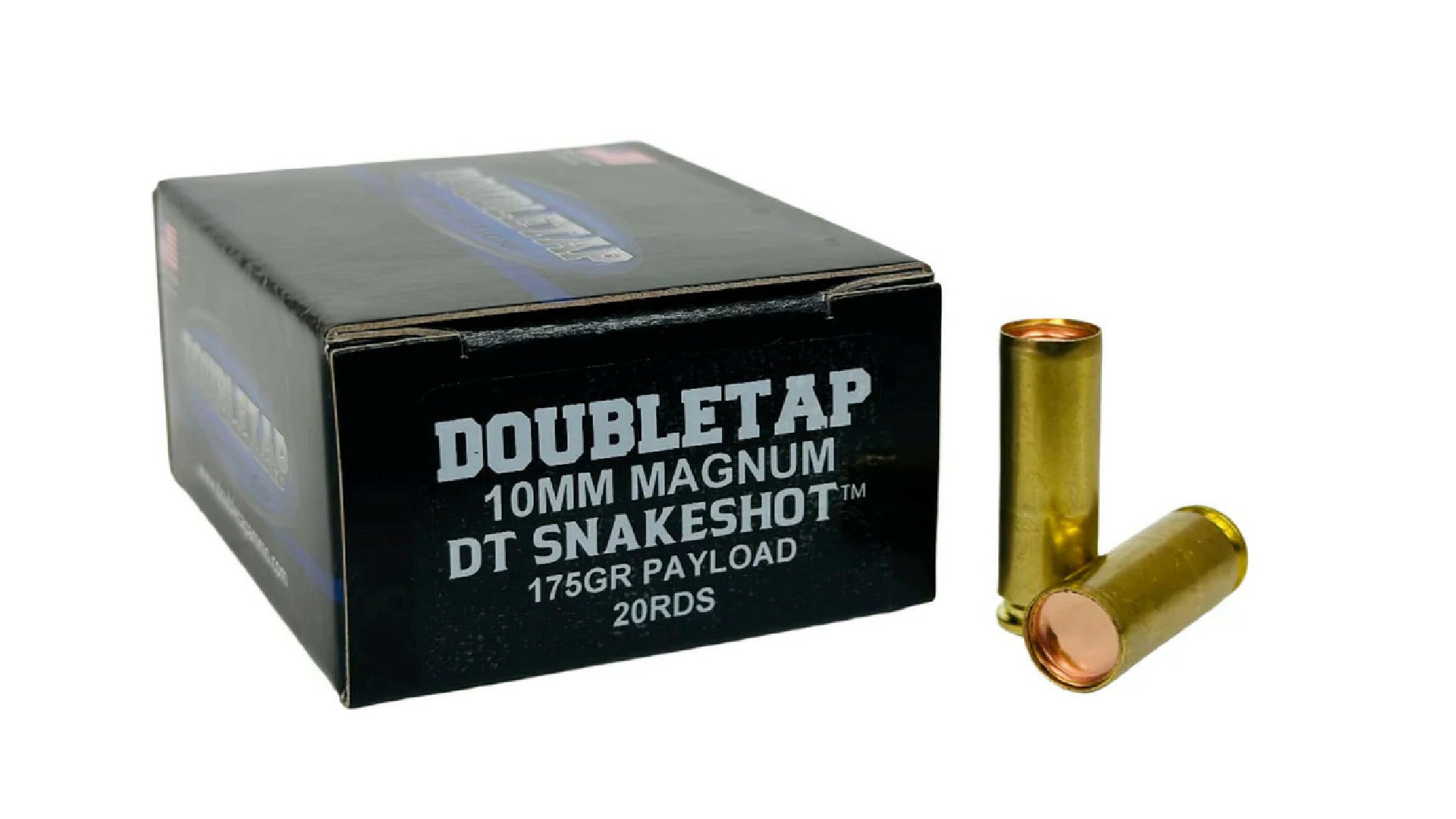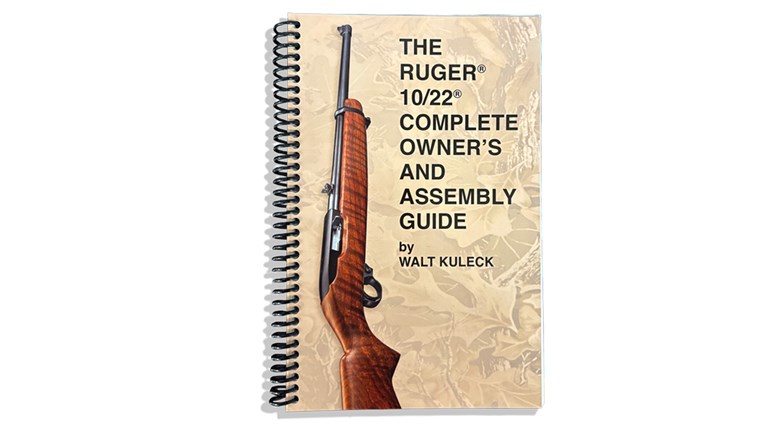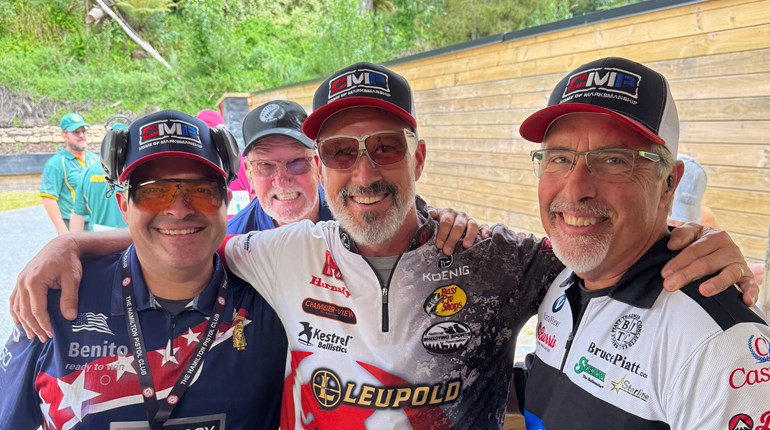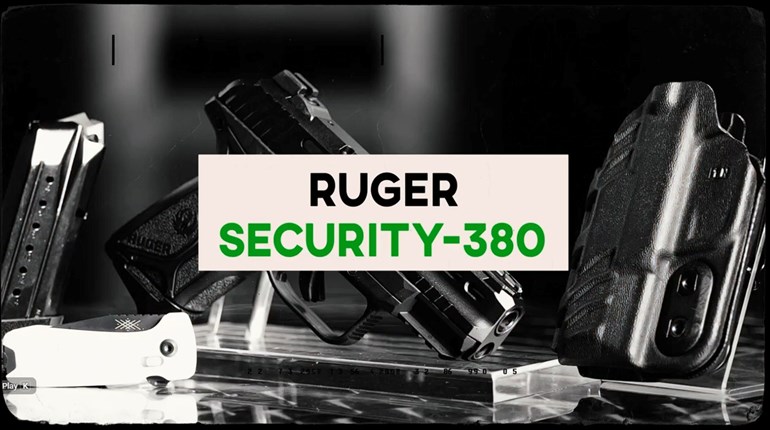
Like most emerging trends, the concept of hunting with an AR-15 platform has plateaued from the frenzy it was a few years ago and the idea is maturing. While I have buddies who have taken sheep, mountain goats and even a leopard with an AR, that’s not the gun I would pick for those hunts. I love my ARs, I shoot them often, but for some types of hunting I think there are better guns. Not to say that an AR won’t work, it’s proven they will. But I think that there are better-suited rifles for something like a sheep hunt.
One place where AR rifles shine is predator hunting. They are accurate, fast on follow up shots and easy to load and unload. They adapt well to bolt-on accessories such as a light for night hunting. As they are modular in design, you can switch uppers, and consequently cartridges, easily and quickly. But what I like most about hunting predators with an AR is that, with the pistol grip and buttstock design, ARs are ergonomically suited for sitting with the gun up on sticks or on your knee while waiting for a coyote to respond to your calls. Sitting still is a function, in part, of comfort and it’s comfortable to hold an AR in a ready position for a long time.
Here is a look at several of the mainstream predator-hunting cartridge options for the AR-15 platform. This is an overview of varmint cartridges, so it does not include big-game cartridges that might serve double-duty for predators.
.17 Remington
When this cartridge was introduced in 1971 there were some ridiculous claims about its ability to kill. At least one fool took one on a brown bear hunt and lived to write about it. The bottom line is that the bullet is tiny and no matter how fast it’s going, it’s not a big-game cartridge.
But do not underestimate it as a coyote round. Its ultra-high velocity when matched with a good bullet will turn out the lights like an electromagnetic pulse. When you hit a coyote fairly in the boiler room, he just stops.
I usually don’t gravitate to small diameter bullets for hunting anything. I am a doubter of them and a fan of big bullets, but I have been shooting coyotes with a .17 Remington for longer than I care to admit and I am amazed each time I see one hit with this pipsqueak of a bullet.
The entry hole is miniscule and there is almost never an exit, so for those of you using the fur this is a good cartridge choice. Most of my experience has been with the 25-grain hollow-point bullet at 4040 fps. But the newer 20-grain Accutip load with a muzzle velocity (MV)of 4250 fps is starting to win me over.
The key is not to stretch the range too far. The .17 Remington needs high velocity to make fast kills and it runs out of steam pretty quickly. It drops below 3000 fps around 200 yards and after that it’s just another tiny bullet trying to do a grown-up’s job that is beyond its abilities.
This cartridge likes a longer barrel to keep velocity high, but I have shot a lot of coyotes with it using an 18.5-inch barrel. For calling in cover with close shots, it has worked fine. It is the velocity on impact that’s important and most of the coyotes I’ve shot with that rifle have been inside 100 yards.
The .17 Remington does foul the bore a bit; all .17-calibers do because the hole is so tiny. The faster you push the bullet, the more the fouling becomes a problem. Right now the .17 Remington is the epitome of velocity from a .17-caliber, factory-loaded cartridge, so, yes, it fouls. Better powders, bullets and solvents have reduced the magnitude of the problem from the days when Nixon was sitting in the White House. But bad reputations die hard in the gun industry and a parrot-like screech of “it fouls barrels” is sure to occur early and often in any discussion of the .17 Remington. In my view, that problem is overstated today. Clean the gun often with an aggressive copper solvent and it’s fine. The down side, other than being a bit high-maintenance: Factory ammo is pretty much limited to Remington and is a tad expensive.
.204 Ruger
Everything I said about the .17 Remington is true with the .204 Ruger, except the latter uses bigger, heavier bullets and has less fouling problems, which means it’s better. Plus it has a lot more ammo options. All the big players load the cartridge. That means a lot of bullet options because high velocity is nothing without a good bullet.
The .204 Ruger is currently the highest velocity centerfire rifle cartridge in production by a major ammo maker. Hornady originated it and has the load with the fastest MV, the 24-grain NTX bullet at 4400 fps. No other factory-produced cartridge on the market approaches that speed. The 32-grain bullets usually run about 4200 and the 40-grainers move out at 3900. Hornady also has a 45-grain bullet with an MV of 3625 fps. Velocity varies depending on which company is loading the ammo. Hornady uses a progressive-burning powder that was developed for this cartridge and was proprietary to them until recently. That meant they were able to obtain a bit more velocity than the other companies. Now the powder is available to everyone, including handloaders, as CFE223.
My AR in .204 Ruger has a 24-inch barrel. It will put most bullets into less than half-MOA and it absolutely wrecks coyotes. In fact, it is one of my favorite cartridges for hunting coyotes with an AR-15. Again, it sheds velocity pretty quickly, but it can reach out a lot farther than the .17 Remington and still is effective.
5.45X39
This cartridge was Russia’s answer to the 5.56 NATO. It was developed in 1974 for use with the new AK-74 rifle. A few years back, the U.S. market was flooded with imported surplus ammo and a lot of AR makers started offering guns chambered for this cartridge. While I have no experience with it on coyotes, I have shot the cartridge quite a bit in an AR. The surplus ammo is military design, which means the bullets will be non-expanding and a terrible choice for hunting.
However, Hornady, Wolf and Tulammo all offer newly manufactured expanding bullet ammo that should work well. Wolf and Tulammo have 60-grain HP bullets with an MV of 2960. Hornady loads a 60-grain V-Max at 2810. All of these loads use a Berdan-primed, non-reloadable steel case.
If you have a gun chambered for this cartridge it should be a decent enough coyote killer. But given the changes in the ammo market, if you are looking to buy a new AR rifle or upper for coyote hunting you will be better served by a different chambering.
.223 Remington
Everybody thinks this is the cartridge Eugene Stoner had in mind when he developed the AR design, but it’s not. He first developed the rifle in the 1950s for the .308 Winchester and called it the AR-10. He thought it would be the next U.S. battle rifle, but the military picked the M-14 instead.
Soon enough the military wanted to move in a different direction with smaller ammo, so he reduced the dimensions on the gun to work with the 5.56X45mm cartridge and called that rifle the AR-15. The military adopted it, named the cartridge the 5.56 NATO and well, as they say the rest is history.
Remington brought out a commercial version of the cartridge, named the .223 Remington. The two are not interchangeable. A rifle chambered for 5.56 NATO can use .223 ammunition, but a rifle chambered for .223 Remington should not be fired with 5.56 NATO ammo. It will chamber and fire, but it is not safe. So check the stamp on the barrel of your AR to see which chamber you have.
The .223 Remington is one of the most popular centerfire cartridges on the face of the earth and is certainly the most popular choice for coyote hunters using ARs. It’s also the one that gives me the most trouble. I have had more coyotes that were hit with a .223 run off than with any other cartridge. Why? With small bullets velocity is very important to instantaneous kills on coyotes. The .223 is right on the ragged edge of “not enough” to start with, and with the shorter barrels favored on ARs the velocity drops even more.
To be fair, I hunt more with a .223 than all the other cartridges combined, so some of it is simply playing the odds. But not all of it. The fix? Pick a longer barrel to maximize its velocity. Then choose high-velocty ammo with good bullets.
During a recent hunt in Oklahoma I used Hornady Superformance ammo with a 52-grain V-Max bullet at a catalog velocity of 3465 fps. I chronographed this load in an AR with a 20-inch barrel and the bullet was moving at 3333 fps: still screaming. Superformance ammo uses a blend of progressive burning powders that is formulated to the cartridge and bullet weight to extract the most velocity possible. I have tested Superformance in a wide range of rifles and cartridges and it is always extremely accurate. This .223 load has averaged sub-MOA in every rifle I have tested, and the V-Max is one of the best varmint bullets ever made.
.223 WSSM
There are a very limited number of manufacturers making AR-15s in the Winchester Super Short cartridges, so options are few. The future availability for the ammo is also in question, as Winchester and Browning no longer make guns in any of the WSSM cartridges. My guess is that it is just a matter of time before Winchester Ammo decides to drop the cartridges from its lineup of factory ammo.
Now that I have completely discouraged you, let me point out that the .223 WSSM has the potential to be the best coyote cartridge available in an AR.
I said before that I think the best rifle for coyote hunting is the AR-15. But the best cartridge is something else. I much prefer a .22-250 Remington or a .220 Swift, which for the most part are not AR-15 cartridges. While at least one company, Olympic Arms, is offering a .22-250 in an AR, the lower has to be modified, so you cannot just use your gun and add the upper. But they also make ARs in .223 WSSM. Factory loads drive a 55-grain Ballistic Silvertip bullet at 3850 fps. If you handload, it can move a 50-grain bullet well over 4000 fps. Those are serious coyote hunting ballistics that will stomp them flat where they stand.
.243 WSSM
The .243 is similar to what I said about the .223 WSSM, just with bigger bullets. The 55-grain Ballistic Silvertip goes 4000 fps. It’s tough on coyotes, to be sure.
6.5 Grendel
Designed by Bill Alexander from Alexander Arms, the 6.5 Grendel is designed for precision work and has gained a following with long-range shooters. But it turns out it’s also a very good coyote cartridge.
Ammo is offered by Alexander Arms, Hornady and Wolf, so availability is not an issue. Hornady has a 123-grain A-Max bullet that moves at 2620 fps. I have shot some coyotes with this load and it killed them just fine in spite of the bullet being designed for targets and not hunting. Bill Alexander says he has had the best luck on coyotes with his ammo using a 100-grain Berger bullet around 2800 fps. Handloaders can push a 90-grain Speer TNT bullet close to 2900 fps.
My rifle is a delight to hunt with; the diminutive package weighs only 5.25 pounds. It features a thin, 16-inch fluted barrel. The gun is just the ticket for calling in close cover where a small rifle is easy to maneuver. Also, a lot of my winter calling is done while wearing snowshoes, so every pound less I have to carry is a blessing.
6.8 SPC
The 6.8 SPC is a confusing cartridge with a varied history and fanatic disciples. Just writing about the 6.8 SPC in an honest article will bring down the wrath of the keyboard ninjas of the secret society of the Internet forum.
As far as I can tell, there are currently four different chamber designs for the 6.8 SPC. But this is subject to change because of a never-ending quest to make this cartridge perform beyond the rules of physics.
Many of the reported results on the Web and other places are from loads that exceed safe SAAMI-accepted pressure standards. I’ll limit my discussion here to the SAAMI-accepted chambering and the mainstream ammo products that are loaded to the accepted pressure standards.
The 6.8 SPC was designed to bring a bit more hitting power to the AR-15 for military applications, but the government took a pass. It lives on as a hunting and self-defense cartridge. It uses a .270-caliber bullet, which is probably right on the tipping point between predator cartridges and big-game cartridges.
The Hornady load with a 110-grain V-Max bullet has an MV of 2550 fps from a 16-inch barrel. The few coyotes I have shot with this load played by the rules and politely fell. While my experience with the 6.8 on predators is limited compared to some of the other cartridges, I think this would be a good choice, particularly for hunters looking for a dual-use cartridge.
Predator hunters were using ARs long before it became “cool,” and I suspect that with the ever-expanding cartridge and ammo options they will be using it well after the fad has faded. With the right cartridge it’s simply the best choice.




































